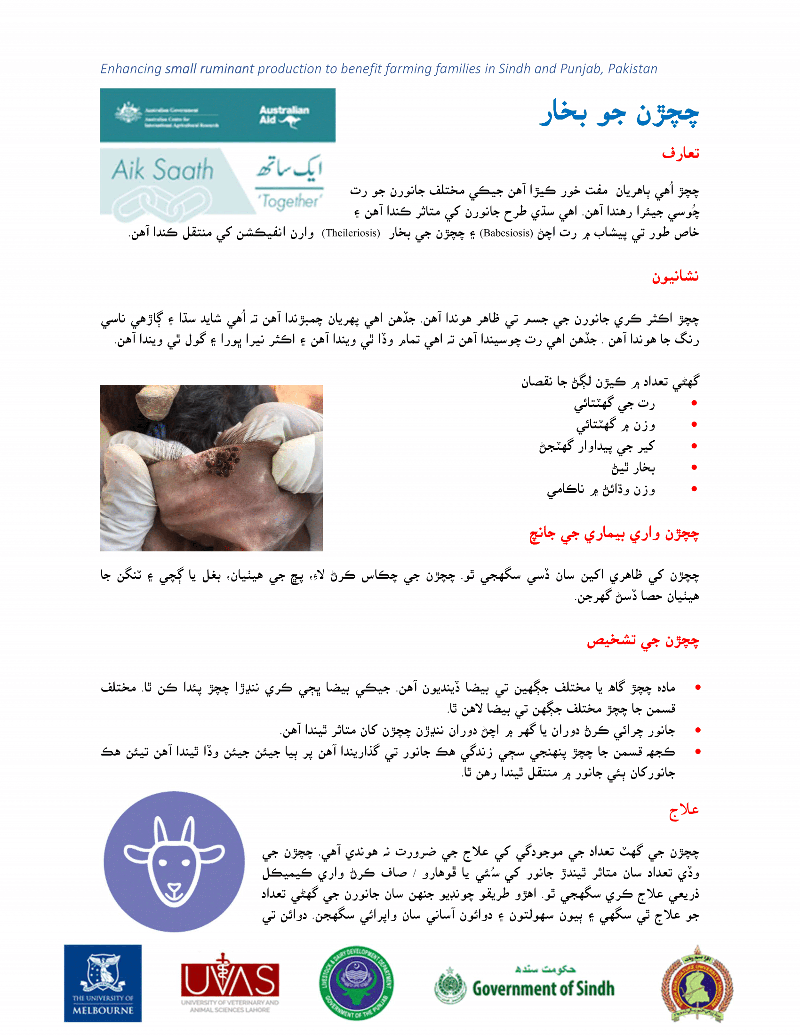
This factsheet is translated in Sindhi and Urdu languages from English version.
Ticks are external parasites that live by feeding on blood of different animals.
They can affect animals directly and also transmit the important infections babesiosis and theileriosis.

